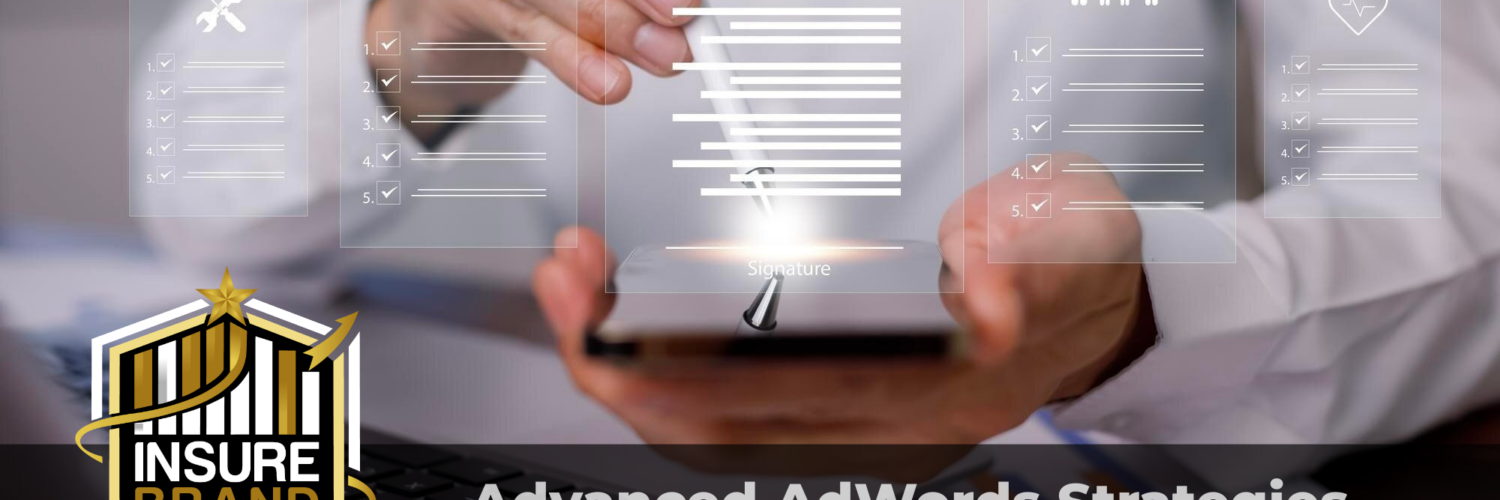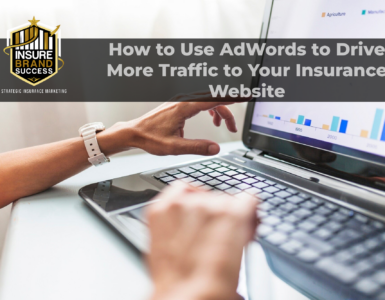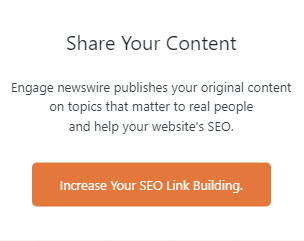In the highly competitive insurance industry, standing out online is a challenge. Potential clients are searching for policies daily, but with so many agencies vying for attention, how do you ensure your business gets noticed?
This is where Google Ads (formerly AdWords) comes in. A well-executed AdWords for insurance agencies strategy allows agencies to appear at the top of search results, targeting high-intent prospects who are actively looking for coverage.
However, running a successful PPC (pay-per-click) campaign requires more than just setting up ads—it demands a deep understanding of bidding strategies, audience segmentation, keyword optimization, and conversion tracking. This guide explores advanced AdWords strategies tailored for insurance agencies to maximize ROI and drive consistent lead generation.
Why AdWords is Critical for Insurance Agencies
Google Ads provides instant visibility, making it one of the most effective insurance marketing strategies. Unlike SEO, which takes time to build organic rankings, PPC campaigns can generate leads immediately. Here’s why insurance agencies should leverage AdWords:
✅ Immediate Results: Get to the top of search results instantly.
✅ Highly Targeted Advertising: Reach users actively searching for insurance.
✅ Flexible Budgeting: Set daily or campaign-level budgets to control ad spend.
✅ Data-Driven Optimization: Use analytics to refine campaigns for better performance.
✅ Scalability: Increase budgets for high-performing campaigns to maximize conversions.
According to the Small Business Administration (SBA), paid search is one of the most cost-effective ways for small businesses to acquire customers, especially in competitive industries like insurance.

1. Structure Your Campaigns for Maximum Efficiency
One of the biggest mistakes insurance agencies make is running broad, unstructured ad campaigns that lead to wasted spend. The key to PPC success lies in well-organized campaign structures.
Best Practices for Google Ads Campaign Structure:
📌 Segment Campaigns by Insurance Type: Auto, home, life, business, and health insurance should have separate campaigns for better targeting and ad relevance.
📌 Use Ad Groups for Keyword Relevance: Break down campaigns into smaller, focused ad groups (e.g., “Auto Insurance for Young Drivers,” “Affordable Home Insurance”).
📌 Leverage SKAGs (Single Keyword Ad Groups): By targeting one keyword per ad group, you can improve Quality Score and click-through rates (CTR).
📌 Optimize Landing Pages: Ensure that each ad leads to a highly relevant landing page to increase conversions and lower bounce rates.
2. Master Keyword Selection for High-Intent Searches
Choosing the right keywords is critical to running a profitable Google Ads campaign. Insurance agencies should focus on high-intent, conversion-friendly keywords that attract leads ready to take action.
Types of Keywords to Target:
🔹 Transactional Keywords (High Intent): “best auto insurance quotes,” “affordable homeowners insurance.”
🔹 Local Keywords: “life insurance brokers in Dallas,” “business insurance near me.”
🔹 Long-Tail Keywords: “how to find the cheapest renters insurance in California.”
Pro Tip: Use negative keywords to eliminate irrelevant clicks (e.g., “free car insurance,” “cheap no-coverage policies”) to reduce wasted ad spend.
For deeper keyword research and optimization, explore SEO solutions for insurance to align organic and paid search strategies.
3. Improve Ad Quality Score to Lower CPC
Google assigns a Quality Score (1-10) based on keyword relevance, ad copy, landing page experience, and expected CTR. Higher scores lead to lower cost-per-click (CPC) and better ad placements.
How to Improve Quality Score:
✔️ Write Highly Relevant Ad Copy: Match ad text with targeted keywords.
✔️ Optimize Landing Pages: Ensure fast loading speed, mobile responsiveness, and a strong call-to-action (CTA).
✔️ Use Ad Extensions: Add site links, callouts, and structured snippets to enhance ad visibility.
✔️ A/B Test Ads: Continuously test different headlines, descriptions, and CTAs for better performance.
A higher Quality Score means lower costs and higher ROI, making it a crucial factor in campaign success.
4. Leverage Audience Targeting for Better Conversions
Beyond keywords, Google Ads allows advanced audience targeting to refine your reach and increase conversion rates.
Advanced Targeting Strategies:
📌 Demographic Targeting: Adjust bids based on age, income, location, and gender.
📌 Remarketing Lists for Search Ads (RLSA): Retarget website visitors with customized ads to bring them back.
📌 Lookalike Audiences: Target new users similar to your existing clients.
📌 In-Market Audiences: Reach users actively researching insurance policies.
Combining keyword and audience targeting creates highly effective campaigns that attract qualified leads.
5. Optimize Landing Pages for Higher Conversion Rates
Getting clicks is only half the battle—your landing pages must convert visitors into leads.
Best Practices for Insurance Landing Pages:
✔️ Strong Headline & Clear Value Proposition: Explain why your agency stands out.
✔️ Minimal Form Fields: Keep quote request forms short and simple.
✔️ Trust Signals: Display customer testimonials, certifications, and awards.
✔️ Fast Load Speed: Pages that load in under three seconds reduce bounce rates.
A well-optimized landing page reduces cost-per-lead (CPL) and maximizes ad spend efficiency.
6. Track & Analyze Performance with Google Analytics
To maximize ROI on Google Ads, tracking key metrics is essential.
Important PPC Metrics to Monitor:
📊 Click-Through Rate (CTR): Measures how often users click on your ad.
📊 Conversion Rate: Tracks how many visitors complete a desired action (e.g., requesting a quote).
📊 Cost Per Acquisition (CPA): Helps measure how much it costs to acquire a new lead.
📊 Bounce Rate: A high bounce rate indicates an issue with landing page relevance.
Using Google Analytics and Google Tag Manager, agencies can optimize campaigns for higher performance.
7. Combine PPC with Other Digital Marketing Strategies
While Google Ads can generate instant leads, a well-rounded digital marketing approach ensures long-term success.
✔️ SEO + PPC: Combining paid search with insurance SEO services helps agencies rank organically and through ads.
✔️ Email Marketing Follow-Ups: Integrate PPC with insurance email marketing to nurture leads who didn’t convert immediately.
✔️ Social Media Retargeting: Use social media strategies to engage PPC leads across multiple platforms.
An integrated digital strategy maximizes lead generation and customer retention.
Frequently Asked Questions (FAQs) About Google Ads for Insurance Agencies
Google Ads (formerly AdWords) is a game-changer for insurance agencies looking to generate high-quality leads, increase brand visibility, and outcompete local and national providers. However, successful PPC (pay-per-click) campaigns require more than just launching ads—you need advanced targeting, strategic bidding, and ongoing optimization.
Below are the most common questions insurance professionals have about running effective Google Ads campaigns and maximizing their return on investment (ROI).
1. How long does it take to see results from Google Ads?
Unlike SEO, which can take months to yield results, Google Ads can generate leads almost immediately. However, true campaign optimization—where costs decrease, conversion rates improve, and ROI increases—typically takes 30-90 days.
The learning phase involves testing different:
✔️ Keywords (broad match vs. exact match)
✔️ Ad creatives (headlines, descriptions, call-to-actions)
✔️ Bidding strategies (manual CPC vs. target CPA)
✔️ Landing pages (user experience and relevance)
By continually refining your campaign, performance will improve over time.
2. What is the best bidding strategy for insurance agencies?
Google Ads offers several bidding strategies, but the best choice depends on your budget, goals, and experience level.
📌 Manual CPC (Cost-Per-Click): Provides full control over bid amounts but requires active management.
📌 Maximize Clicks: Good for increasing traffic, but may not optimize for conversions.
📌 Target CPA (Cost-Per-Acquisition): Google automatically adjusts bids to get leads at a set cost.
📌 Target ROAS (Return on Ad Spend): Prioritizes ads based on their expected return, ideal for agencies tracking revenue.
For new campaigns, start with Manual CPC or Maximize Clicks, then transition to Target CPA once you have conversion data.
3. What’s the average cost-per-click (CPC) for insurance ads?
Insurance is one of the most competitive industries on Google Ads, leading to higher CPCs than other sectors.
📌 Auto Insurance: $10 – $40 per click
📌 Life Insurance: $15 – $55 per click
📌 Health Insurance: $5 – $30 per click
📌 Business Insurance: $8 – $25 per click
Despite the high CPCs, the customer lifetime value (CLV) of an insurance client is substantial, making PPC a worthwhile investment when campaigns are optimized effectively.
For a more cost-efficient approach, explore SEO solutions for insurance to complement paid advertising.
4. Should I run search ads or display ads?
Both Search Ads and Display Ads serve different purposes in a Google Ads strategy:
✔️ Search Ads (Text-Based): Best for high-intent prospects actively searching for insurance.
✔️ Display Ads (Image-Based): Used for brand awareness and remarketing, targeting users who visited your website but didn’t convert.
A hybrid approach works best:
📌 Use Search Ads for lead generation.
📌 Run Display Ads to retarget users who interacted with your brand.
5. How can I lower my cost-per-click (CPC) in Google Ads?
Since insurance keywords are highly competitive, lowering CPC requires strategic optimization.
📌 Increase Quality Score: Google rewards relevant ads and landing pages with lower CPCs.
📌 Use Negative Keywords: Exclude searches like “free insurance” or “low coverage” to avoid wasteful clicks.
📌 Bid on Long-Tail Keywords: Target specific, low-competition phrases like “affordable business liability insurance in Texas.”
📌 Optimize Landing Pages: A high conversion rate improves Quality Score, reducing costs.
A well-optimized Google Ads campaign maximizes budget efficiency while attracting high-quality leads.
6. What are negative keywords, and why are they important?
Negative keywords prevent ads from showing on irrelevant searches, reducing wasted spend.
For example, an auto insurance agency might use negative keywords like:
❌ “cheap auto insurance no coverage”
❌ “auto insurance jobs”
❌ “free auto insurance quotes no payment”
By filtering low-converting traffic, agencies can improve conversion rates and lower CPCs.
7. How can I improve my ad copy for higher click-through rates (CTR)?
Strong ad copy is essential for attracting qualified prospects. To improve CTR:
✔️ Use numbers and statistics (“Save 25% on Home Insurance Today!”)
✔️ Highlight unique selling points (“Fast Quotes, No Hidden Fees”)
✔️ Include a clear call-to-action (CTA) (“Get a Free Quote Now”)
✔️ Match ad copy to search intent (“Best Health Insurance Plans for Families”)
A compelling, relevant ad increases CTR and reduces CPC costs.
8. What is remarketing, and how can insurance agencies use it?
Remarketing allows agencies to re-engage visitors who didn’t convert the first time.
📌 Example: If someone visits your “Life Insurance Quotes” page but doesn’t submit a form, remarketing ads can follow them across websites, reminding them to come back.
Remarketing ads increase conversion rates by keeping your brand top-of-mind.
9. How do I track conversions from Google Ads?
Tracking conversions ensures you’re measuring campaign success. Essential tracking tools include:
📌 Google Ads Conversion Tracking: Tracks completed actions (e.g., form submissions, calls).
📌 Google Analytics Goals: Measures lead generation and website engagement.
📌 Call Tracking Software: Monitors calls from ads to gauge effectiveness.
Without tracking, you won’t know which ads drive actual business results.
10. Should I combine Google Ads with other digital marketing strategies?
Yes! A holistic approach works best. Pairing Google Ads with SEO, email marketing, and social media increases overall lead generation.
✔️ SEO + PPC: Insurance SEO services help agencies rank organically and through ads.
✔️ Email Marketing: Insurance email marketing nurtures PPC leads who don’t convert immediately.
✔️ Social Media Retargeting: Social media strategies ensure you stay visible across platforms.
A multi-channel approach ensures maximum visibility and lead generation.

Maximize Your Google Ads Performance Today
Google Ads is a highly effective tool for insurance agencies looking to increase visibility, generate leads, and drive conversions. However, simply running ads isn’t enough—you need a strategic, data-driven approach to ensure your budget is being used efficiently and effectively.
Success with Google Ads requires:
📌 Targeting the right audience—Focusing on high-intent prospects actively searching for insurance solutions.
📌 Using precise keyword strategies—Bidding on profitable, conversion-ready keywords while eliminating wasteful spend with negative keywords.
📌 Optimizing ad copy and creatives—Writing compelling, action-driven ads that improve click-through rates (CTR).
📌 Refining landing pages—Ensuring pages are fast, mobile-friendly, and designed for lead conversion.
📌 Leveraging data analytics—Using Google Ads, Google Analytics, and call tracking tools to measure performance and optimize for better ROI.
The Key to Google Ads Success: Continuous Optimization
One of the biggest mistakes insurance agencies make with Google Ads is setting up a campaign and leaving it to run without adjustments. The best-performing campaigns are those that are actively monitored, analyzed, and optimized based on real-time data.
Here’s how agencies can ensure long-term success:
✅ Regularly update keyword strategies – Identify high-converting keywords and eliminate underperforming ones.
✅ Test different ad creatives – A/B test headlines, descriptions, and call-to-actions to determine what resonates best with your audience.
✅ Improve Quality Score – Google rewards ads with high relevance and strong landing pages by lowering cost-per-click (CPC).
✅ Refine audience targeting – Use demographic data, location targeting, and remarketing to focus on the most valuable leads.
✅ Monitor conversion rates – Track which ads, keywords, and landing pages drive the most quote requests, phone calls, and sign-ups.
Unlock the Full Potential of Google Ads for Insurance Agencies
Google Ads is a powerful lead-generation tool, but to get the most out of it, insurance agencies need expert guidance and strategic execution. By fine-tuning ad strategies, optimizing budget allocation, and continuously testing new approaches, agencies can reduce ad spend waste, improve lead quality, and increase ROI.
📌 Ready to elevate your Google Ads strategy? Explore AdWords for insurance agencies and start optimizing your PPC campaigns today! 🚀





